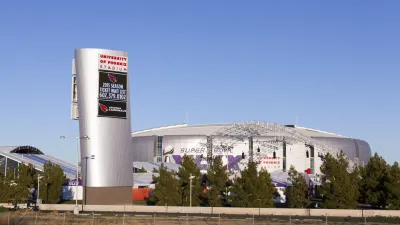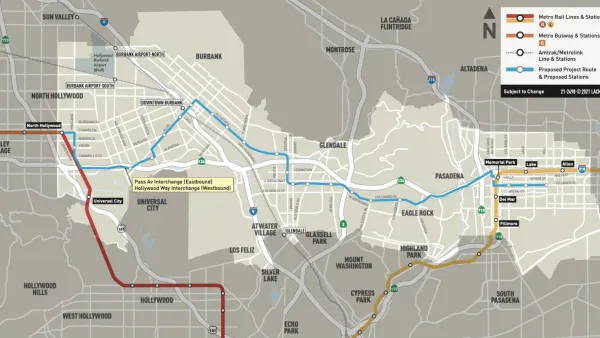Mark Byrnes breaks down the math on this year's Super Bowl and finds the host city of Glendale, Arizona getting shortchanged.

Mark Byrnes balances the checkbook on the city of Glendale, Arizona's investment in the University of Phoenix Stadium and finds that the city's interests fall wall short of the NFL's.
First of all the cost to the taxpayers of the city and the state: "$302.3 million from the Arizona Sports and Tourism Authority and $9.5 million from the City of Glendale to build the stadium. (The team contributed $143.2 million.)"
Then this weekend, "the Phoenix suburb is expecting to spend $2.1 million on security for Super Bowl week."
Then there's the revenue expected to return to the city as a result of this weekend's hoopla: "PricewaterhouseCoopers estimates $206 million in direct spending (tourism, lodging and transportation) will flow into the metro area as a result of this year's Super Bowl, but adds that after inflation the figure is two percent lower than projected for Glendale's first Super Bowl, back in 2008. For that event, the city of Glendale collected approximately $1.24 million in direct revenue and state shared sales taxes."
Which, Byrnes concludes, is "not an especially exciting bottom line considering more than 40 percent of Glendale's current debt 'is dedicated to paying off sports complexes,' as reported in the New York Times last weekend."
The article includes more details on how the NFL makes the case for new stadium investments and how localities get the short end of the stick, including the example of East Rutherford, New Jersey, which hosted the event in 2014.
FULL STORY: The Burden of Hosting a Super Bowl

National Parks Layoffs Will Cause Communities to Lose Billions
Thousands of essential park workers were laid off this week, just before the busy spring break season.

Retro-silient?: America’s First “Eco-burb,” The Woodlands Turns 50
A master-planned community north of Houston offers lessons on green infrastructure and resilient design, but falls short of its founder’s lofty affordability and walkability goals.

Delivering for America Plan Will Downgrade Mail Service in at Least 49.5 Percent of Zip Codes
Republican and Democrat lawmakers criticize the plan for its disproportionate negative impact on rural communities.

Test News Post 1
This is a summary

Test News Headline 46
Test for the image on the front page.

Balancing Bombs and Butterflies: How the National Guard Protects a Rare Species
The National Guard at Fort Indiantown Gap uses GIS technology and land management strategies to balance military training with conservation efforts, ensuring the survival of the rare eastern regal fritillary butterfly.
Urban Design for Planners 1: Software Tools
This six-course series explores essential urban design concepts using open source software and equips planners with the tools they need to participate fully in the urban design process.
Planning for Universal Design
Learn the tools for implementing Universal Design in planning regulations.
EMC Planning Group, Inc.
Planetizen
Planetizen
Mpact (formerly Rail~Volution)
Great Falls Development Authority, Inc.
HUDs Office of Policy Development and Research
NYU Wagner Graduate School of Public Service





























